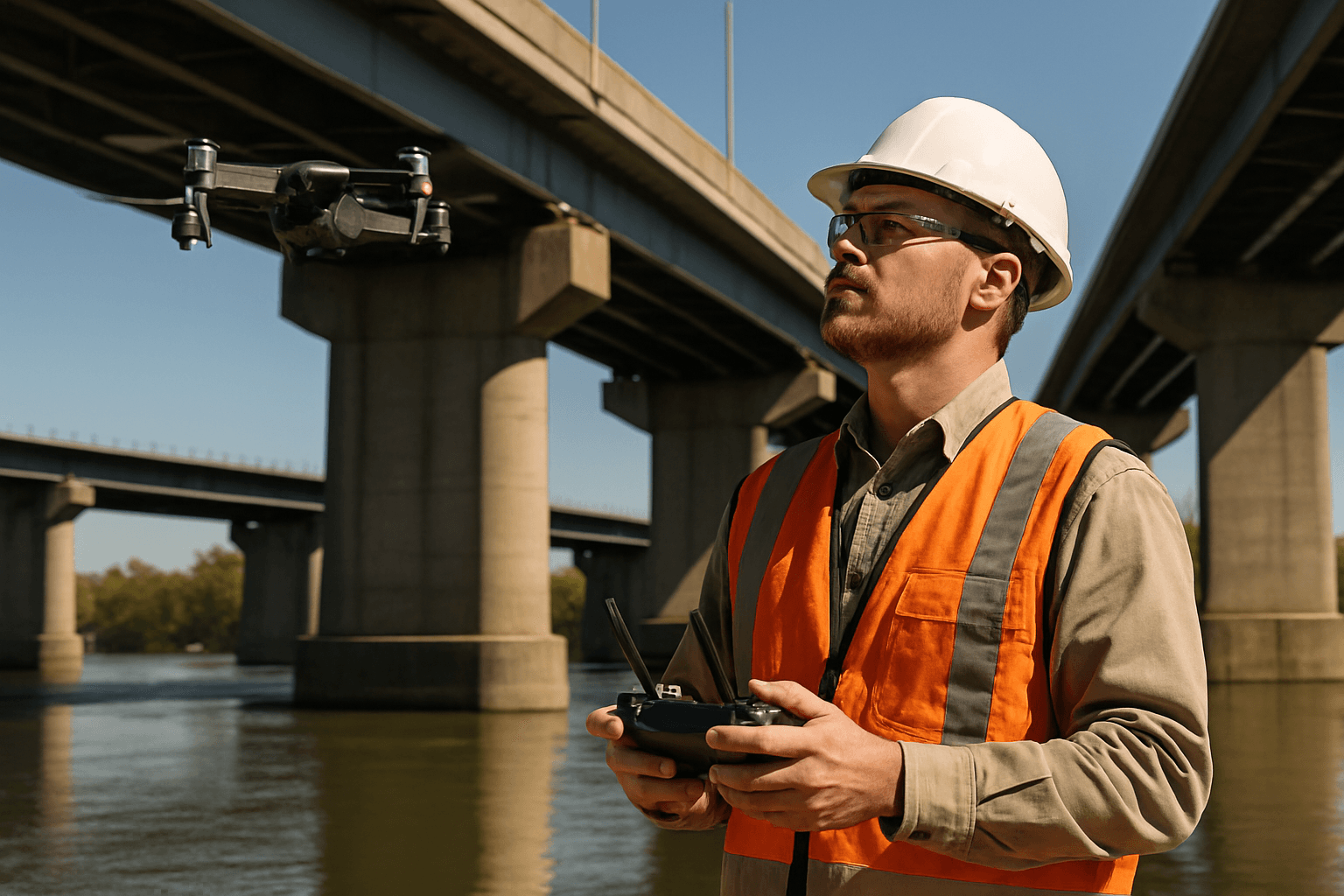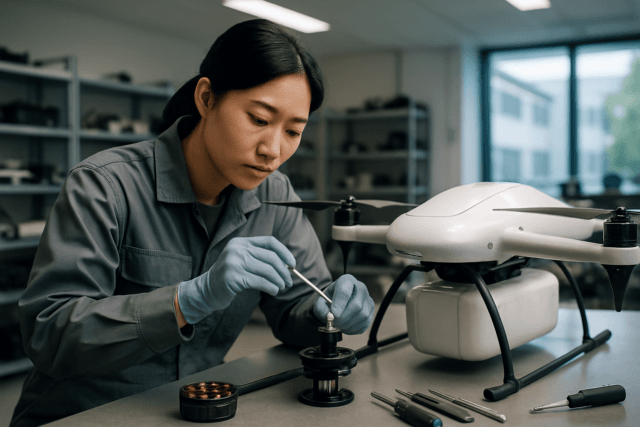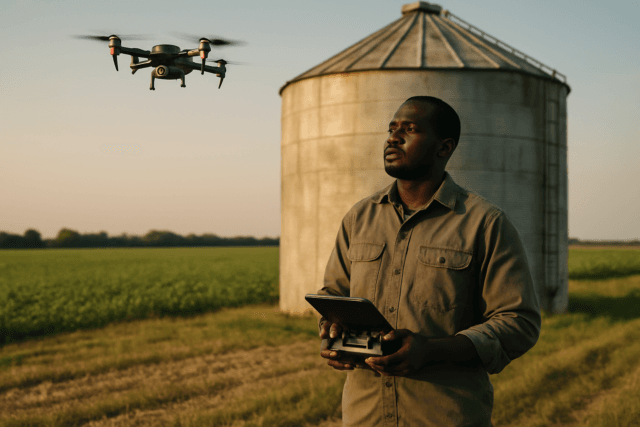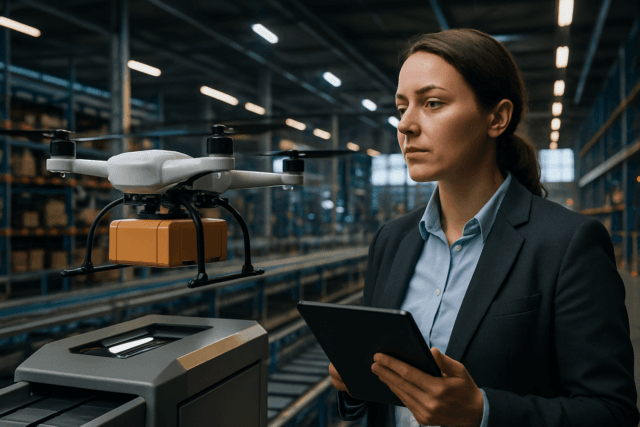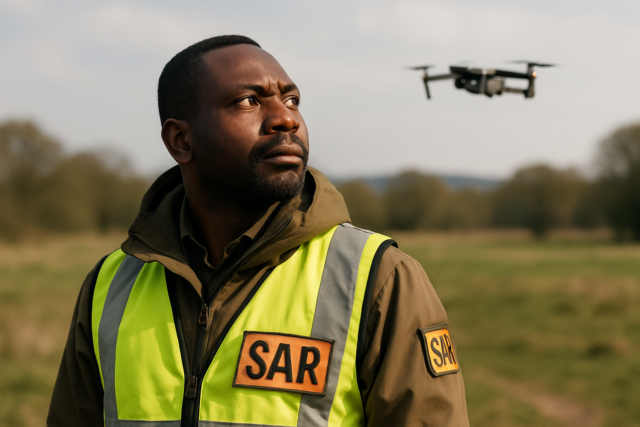Drones, also known as unmanned aerial vehicles (UAVs), have moved beyond being simple novelties to become essential tools across various sectors. Their ability to capture real-time data, automate processes, and access previously unreachable locations is revolutionising operations and unlocking significant cost savings.
Streamlining Operations and Slashing Labour Costs
One of the most prominent ways drones save money is by streamlining operations and drastically reducing labour costs. Traditional methods of surveying, inspection, and data collection often require large teams, specialised equipment, and extensive time commitments. Drones, however, can accomplish these tasks with significantly less manpower and in a fraction of the time.
Land Surveying
Conventional land surveying can take days or even weeks, depending on the site’s size and terrain. Drones, on the other hand, can map large areas with high precision in just minutes, collecting thousands of data points in a single flight. This rapid data acquisition translates to faster project turnarounds and reduced downtime.
Construction Site Monitoring
Drones equipped with high-definition cameras and sensors can monitor construction sites, track materials, and assess inventory in real-time. This eliminates the need for manual inspections, reduces labour costs, and allows resources to be reallocated to other critical areas of the project.
Infrastructure Inspection
Inspecting bridges, power lines, and other critical infrastructure components traditionally involves costly and dangerous manned operations. Drones can access hard-to-reach locations, assess structural integrity, and provide real-time data without putting human lives at risk, while also reducing the need for expensive equipment like scaffolding and harnesses.
Enhancing Accuracy and Minimising Errors
Drones not only save time and labour but also enhance the accuracy of data collection, leading to fewer errors and costly rework. Their ability to capture detailed imagery and create 3D models provides a more precise representation of sites and assets compared to traditional methods.
Accurate Material Estimates
Inaccurate material estimates can lead to project delays and budget overruns. Drones can quickly provide a precise representation of a construction site, allowing for accurate material estimates and minimizing waste.
Optimising Resource Management and Inventory Control
Efficient resource management and inventory control are essential for cost-effective operations. Drones can play a vital role in these areas by providing real-time data on resource availability, equipment location, and inventory levels.
Tracking Materials and Equipment
Drones can track materials, monitor equipment, and assess inventory in real time on construction sites and in warehouses. This helps prevent material shortages, reduces equipment downtime, and ensures that resources are used efficiently.
Cost Savings Across Industries
Drones are proving to be invaluable tools in various industries, including construction, agriculture, energy, and logistics, offering significant cost savings and improved efficiency.
Construction
Drones are revolutionising the construction industry by improving project planning, enhancing site monitoring, and improving safety standards. They achieve this through:
- Revolutionising Site Surveys and Mapping: Drones zip around construction sites in no time, capturing high-resolution images and data, equipped with advanced cameras and sensors that create detailed 3D maps and models of the site. Consequently, what used to take weeks now takes hours. Drone surveys are also more accurate, safer and cost-effective.
- Real-Time Progress Tracking: Drones offer a bird’s-eye view of the entire site, whenever you need it. This means capturing high-res aerial shots of the whole site, creating time-lapse videos to show progress over time, generating 3D models to compare actual progress with plans, and spotting potential issues before they become big problems.
- Streamlining Equipment and Materials Management: Drones conduct quick inventory counts of material stockpiles, track equipment with regular flyovers, verify deliveries and deter theft through regular aerial surveillance.
- Precision in Earthwork and Site Prep: Precise measurements mean better planning and execution, rapid surveys replace slow manual measurements, and accurate volume calculations prevent over-excavation and optimise material usage.
Drones reduce the need for expensive manual labour, lower the risk of costly project delays, and minimise rework due to errors. Additionally, the high-quality data provided by drones leads to better resource management and reduced material wastage.
For example, Barratt Developments used drones on a housing site survey and cut £20,000 in labour costs.
Agriculture
Drones are a cost-effective investment for agribusinesses, offering an opportunity to future-proof businesses and save money through:
- Efficient Distribution of Seeds, Pesticides & Fertilisers: Drones are highly efficient and effective in crop spraying, seed distribution, and ongoing crop care, making for totally streamlined operations.
- Precision and Accuracy: Drones provide precision and accuracy in crop spraying and seed distribution, as well as valuable insights through data and visualisation.
- Cost-Effective Alternative to Strenuous Labour: Drones reduce the amount of time spent completing tasks and the associated costs on a daily, weekly, or monthly basis.
Drones enable farmers to optimise the use of critical resources like water, fertilizers, and pesticides. Multispectral imaging from drones can detect variations in crop health across a field, allowing farmers to apply resources precisely where they’re needed rather than uniformly across the entire field. This targeted approach reduces wastage and ensures resources are utilized effectively, yielding substantial cost savings and environmental benefits.
Once automation can manage batteries and payloads, farmers could see a 90% reduction in field application costs and they won’t have to spend hours driving spraying and spreading equipment.
In Iowa, farmers used drones for corn and soybean farming. The drone data helped optimize irrigation and fertilizer use, leading to a 10% increase in yield and a significant reduction in resource costs.
Energy Sector
Drones offer numerous economic benefits to the energy sector, including:
- Reduced Inspection Costs: Drones save on expenses associated with traditional methods such as manned aircraft flyovers, ground-based surveys, and rope access teams. Drones can cover large areas quickly and efficiently, leading to reduced labour and equipment costs.
- Minimized Downtime: Drones can detect potential issues and gather essential data faster than traditional methods, allowing for quicker decision-making and problem resolution. This helps minimise downtime, keeping operations running smoothly and maintaining productivity.
- Lower Maintenance Costs: By detecting issues such as leaks, corrosion, and structural damage early, drone inspections can help prevent costly repairs and potential environmental hazards. This proactive approach leads to lower maintenance costs and reduced long-term expenses.
- Improved Asset Management: Drones equipped with advanced sensors can collect comprehensive data on assets, providing valuable insights into their condition and performance. This information enables companies to optimise asset management, leading to better resource allocation and reduced costs.
Drones reduce operational expenses by cutting labour and equipment costs while extending asset life spans through proactive maintenance and monitoring.
National Grid reports roughly £1m per year saved on overhead-line inspections by using drones instead of helicopters or climbers.
Shell’s drone-based inspection of refinery stacks not only enhanced safety but also reduced inspection costs by tens of thousands of dollars per event, compared to manual inspection methods involving cranes and scaffolding.
Logistics
Drones offer a cost-effective solution for last-mile delivery, especially in scenarios such as delivering emergency shipments or serving low-demand areas. Model results showed that depot-based drone delivery led to up to 60 percent cost savings compared to truck-only delivery when servicing low demand in small areas.
Other Areas of Cost Savings
Drones are also used for:
Public Safety
The 2024 UK Budget set aside £230m for “time- and money-saving” tech like drones. Law enforcement is already seeing big gains – one study found NPAS (police air service) operations shifted to drones cut costs 55.4% (about £22.6m/yr savings). The Maritime and Coastguard Agency estimates roughly £1.6m/yr in operating costs saved by using drones for search-and-rescue and patrols.
Infrastructure & Asset Inspection
Routine asset inspections that once required heavy equipment are now handled cheaply from the air. Renfrewshire Council (Scotland) cut roof-inspection costs by millions per year using drones. Industry guides note drone turbine/blade inspections cost only 20–25% of manual methods.
Conclusion
Drones have emerged as a powerful tool for driving cost efficiency across a wide range of industries. By streamlining operations, enhancing accuracy, improving safety, and optimising resource management, drones are helping businesses save money, improve productivity, and gain a competitive edge. The long-term cost-saving potential of drones is undeniable, and their adoption is poised to continue growing as technology advances and regulations evolve.

